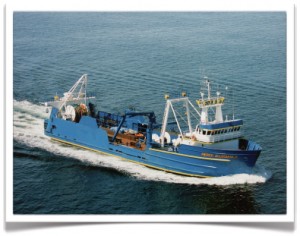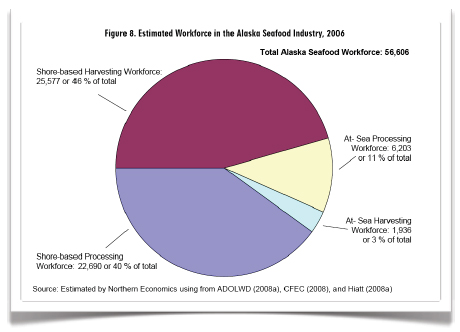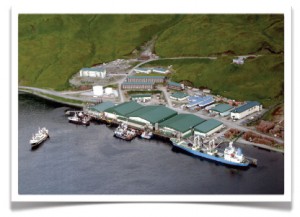| The cold, clear waters of Alaska are among the world’s largest source of sustainable seafood, and the Alaska pollock fishery is one of the largest sustainable fisheries in the world.
The United States pollock fishery began in the 1980‘s, following the passage of the Magnuson Stevens Act in 1976, which phased out foreign fleets that operated just off Alaska’s shores. Today, the pollock fleet works from several coastal communities in the Aleutian Islands, Bering Sea, and Gulf of Alaska. Pollock are processed both at-sea and at onshore processing plants. In many instances, pollock harvesting and processing is the foundation for seafood companies that employ thousands of people in areas where there are no other industries. The pollock fishery is a world class example of sustainable management. Harvest levels are conservatively managed by fishery scientists to prevent overfishing and to protect other components of the marine ecosystem. The fishery has very low bycatch rates, and the fleet minimizes habitat impacts by using mid-water trawls. The pollock fishery is also covered by one of the worlds most robust observer and monitoring programs to ensure that the rules are followed. It provides thousands of direct and indirect jobs and generates an economic base and millions of dollars of tax revenues for Alaskan communities, the State of Alaska and the US government. |
 |
The Pollock Story
| Fisheries are a major part of the Alaska economy, generating roughly $5.8 billion in revenues, and providing over 56,000 jobs. Alaska pollock plays a major role in this success story.
When the United States extended its fisheries management jurisdiction out to 200 miles offshore in 1977, U.S. fishermen and processors were not engaged in the Alaska pollock fishery. By the late 1980s the fleets, processors and coastal communities had made significant investments and the industry became a major source of seafood, as well as an economic driver for coastal communities. |
 Alaska Pollock is the world’s largest certified sustainable fishery, and one of the major fisheries that support thousands of jobs in Alaska’s coastal communities.
Alaska Pollock is the world’s largest certified sustainable fishery, and one of the major fisheries that support thousands of jobs in Alaska’s coastal communities.
|
| In the early 1990’s, pollock also became the foundation for the innovative Community Development Quota program that awarded a small portion of the available catch to remote villages along the Bering Sea coast. The CDQ program created opportunities for coastal residents to become involved in the fisheries off their shores; creating jobs, training programs, and investments in harvesting and processing ventures that today make the CDQ groups some of the largest private sector employers in the region.
In 1992 the American Fisheries Act (“AFA”) was implemented to sustainably manage pollock for the long term. Before implementation of the AFA, the race for pollock during pulse openings and short seasons often resulted in higher than necessary by-catch of halibut, herring and crab because a vessel did not have enough time to relocate their fishing effort when they encountered these species before the end of the short fishing periods. Fast forward to today. The pollock industry has developed the Sea State program to monitor real time by-catch rates of non-pollock species using satellite transmissions to collect and analyze observer data sent directly from the vessels. By tracking this real time fisheries data, Sea State can work with the pollock fishing cooperatives to almost instantly alter fishing areas or practices to avoid by-catch of other species. Today, pollock is the largest certified sustainable fishery in the United States. Pollock has become the foundation for new investment in both public and private infrastructure, and the creation of thousands of jobs in remote coastal communities. Pollock products are found worldwide, and range from fish sticks to white table cloth filets. Alaska pollock provides for sustainable fisheries and communities while feeding a hungry world. |
|


